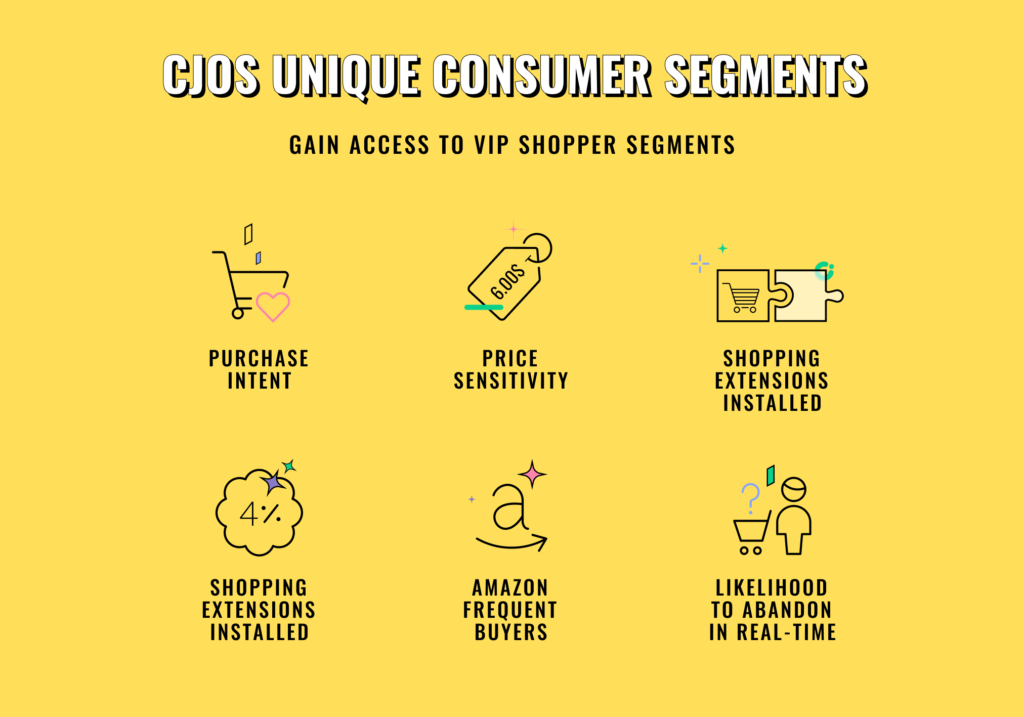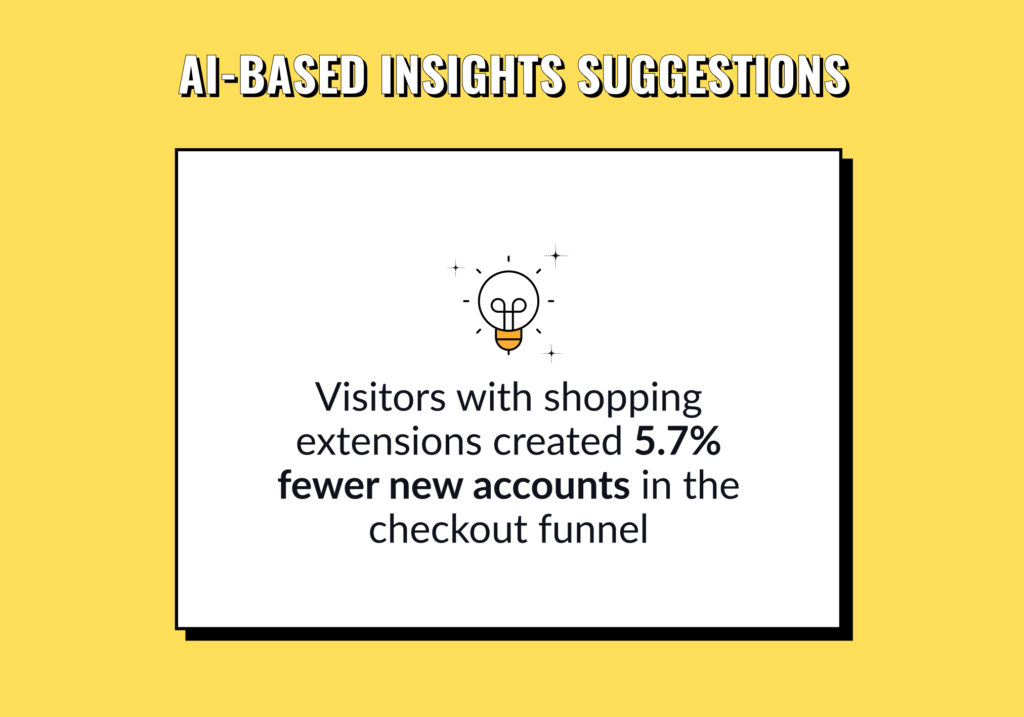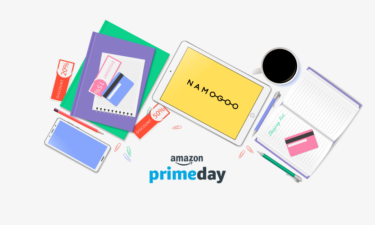It sounds simple:
Collect visitor data, connect it to your MarTech stack, and take action on the insights in real time as customer journeys unfold.
This is what effective eCommerce optimization looks like.
But as simple as it sounds in theory, it has been nearly impossible for online retailers to implement this in practice, even for the 75% of eCommerce leaders who admit they have the tools & data at their disposal.
Why?
Because of systemic issues with the way eCommerce infrastructure is set up. Brands have to contend with:
- Siloed, misaligned tools. Now more than ever, brands have a plethora of tools available to power the customer experience, from marketing technologies to CRMs and analytics platforms. But each tool roars in a different direction, defining data points and segments uniquely, and failing to communicate with – let alone collaborate with – other tools.


- Blind spots in the customer journey. Accepted by most as a fact of life as an online retailer, most eCommerce teams are missing valuable data about their visitors and customers, critical to delivering an unstoppable customer experience.
- Privacy and PII data issues. The user privacy and data use restrictions implemented by the world’s largest tech companies have had an incredible impact on business’s ability to provide personalized experiences – not to mention targeting accuracy and customer acquisition costs.
- A lack of actionable insights. With a siloed tech stack, platform reporting in disagreement, blind spots in the customer journey, and data collection restrictions (not to mention that sometimes it’s just hard to really understand what happened!) it’s no wonder that eCommerce teams lack the ability to discover the opportunities and inefficiencies necessary to optimize.
- Inability to implement solutions in real-time. When insights are discovered, eCommerce teams struggle to implement solutions in a timely manner – and online, that means in real-time, as the customer journey unfolds.
This gap is causing brands to lose revenue, conversions, and customer lifetime value as they’re forced to serve generic experiences across the lifecycle, acting on valuable data too little too late.
Below, we’ll share how online retailers can overcome these challenges with the new evolution in eCommerce infrastructure: an eCommerce Operating System.
What is an eCommerce Operating System?
An eCommerce operating system is an infrastructure that acts as the interface between an eCommerce company and its resources to dynamically manage and execute customer experiences in real-time (as opposed to optimization activities).
Differing from an eCommerce platform, it does this by acting as the point of connection between all of the programs, systems, platforms, and tools that make up an eCommerce business.
Like the operating system that’s powering the device you’re reading this on makes it possible for you to tailor your phone or PC to meet your needs, an eCommerce operating system enables online retailers to optimize each customer journey to meet the business needs of the organization.
Introducing Customer Journey OS: The First eCommerce Operating System
Customer Journey Operating System, or Customer Journey OS, is the central infrastructure for the digital customer journey that enables brands to orchestrate, manage, and act upon all journey data in real time.

- It automatically standardizes and aligns data from all of the tools in your tech stack and maps it to your site events and data to empower eCommerce teams to take action on valuable, revenue-driving insights in real-time across every channel and platform.
- Its structure is uniquely suited for the challenges facing eCommerce teams today, helping them to be more adaptive and agile, easily achieve digital transformation, and improve cross-team collaboration.
- Customer Journey OS is a flexible infrastructure that allows eCommerce teams to run their efforts smoothly while highlighting the areas worth investing resources in.
- Pre-populated with custom data points and capabilities, Customer Journey OS gives online retailers access to unique consumer segments and the ability to empower their entire tech stack with enriched data about shoppers – insanely useful data, like each visitor’s intent, price sensitivity, shopping extensions installed, and so much more – benchmarked against those billions of sessions.
- Customer Journey OS enables eCommerce brands to maximize their business potential by monitoring, strategizing, exploring, and activating dynamic, personalized customer journeys across the entire customer lifecycle.
Unlike customer data platforms (CDPs), analytics tools, or working with data agency partners, Customer Journey OS takes the manual labor out of setting up and maintaining data infrastructures and enables real-time actions for each journey.

Why eCommerce Companies Need an eCommerce OS
Developed specifically for global eCommerce companies with vast and complex online marketing activities, Customer Journey OS enables online retailers to shape and influence shopper journeys while they’re happening to maximize each point in the journey to purchase.
Deliver Highly Targeted Experiences
If you’ve ever thought to yourself “I’m sure Facebook is spying on me,” you’ll be relieved to know its not. Well, not in a traditional sense.
Tech giants like Facebook leverage an impressive tech infrustructure to sort and manage all of the data that comes from their assets in a highly effective way. This enables them to serve ads that make it seem like they can read your mind – or can eavesdrop on your conversations.
Delivering personalized experiences in real-time is highly effective, cost-efficient, and loyalty building. And for eCommerce brands that connect all their stack to these dynamic segments, these highly targeted, hyper-relevant experiences can happen across the entire buying journey.
But delivering such personalized experiences is also heavily reliant on data. A lot of data. A scale of data that most eCommerce companies just don’t have access to.
Until now.
Customer Journey OS unlocks Namogoo’s AI-powered Prediction Engine, which is based on Namogoo’s network of hundreds of millions of conversions and billions of monthly site visitors from the world’s top online retailers.
Better yet, the data is collected without relying on third or first-party data; it’s entirely cookieless and doesn’t collect any personally identifiable information (PII).
Customer Journey OS levels the playing field for eCommerce personalization by providing access to a scale of data that has historically been reserved for the world’s biggest tech giants.
Deliver personalized customer experiences in real-time like Netflix or Amazon, without having to be Netflix or Amazon.
Standardization of Data
Between predictive analytics, machine learning, and AI, data is a powerful force to be reckoned with.
Data unlocks the ability to:
- Discover exactly what is happening in each customer journey
- Gain insight into why it’s happening
- And take action to optimize each step of the funnel.
But the problem with data is that each system basically works on its own, which makes it really difficult to apply and deliver cohesive marketing strategies and journeys for your shoppers… even if you have access to all the data necessary.
If you don’t have standardized, unified data, how can you possibly bridge the gap and take action across platforms?
Customer Journey OS acts as a centralized hub, automatically standardizing the data, so it’s all speaking the same language. It then syncs all of that data to your tools dynamically.
Now all your data points and segments are aligned and accessible in your tools so that you can take meaningful action on them in real time.
Actionable Insights Directly Delivered
If you saw the word “Insights” in the title of this section and had to fight back an internal eye-roll, we get it. The “insights” provided by Shopify or Google Analytics aren’t very insightful. Chances are, you know which of your products are top sellers, and the fact that a landing page loads 0.8 seconds slower than it did a week ago isn’t very useful.
That’s where Customer Journey OS differs.
Remember those hundreds of millions of transactions across billions of eCommerce shopping sessions every single month we mentioned earlier?
The vast data collected and processed over those sessions power the insights you’ll find within Customer Journey OS. And with 80+ pre-populated, unique data points from layering each company’s proprietary data with 360-degree customer journey data and Namogoo’s intelligence, those insights are actually insightful.
The unique, pre-populated, non-PII journey data points not only provide a crystal clear view of each customer journey as it happens; you also get smart insights benchmarked against an incredible amount of data from other retailers.

No more having to spend time on data analysis; here is where you close the gap on blind spots and become aware of opportunities as they arise with actionable insights and execute quick wins that actually have the potential to move the needle.
Real time Segmentation and Execution
iOS14 and the shift to a cookie-less world have resulted in the cannibalization of ROAS for most digital advertisers, causing many to explore options as to how to reduce CAC and improve ROAS.
Imagine if you could identify your site visitors with a low purchase intention, ad blockers installed, or have opted out of tracking, and with the click of a button, send the segment to Meta to exclude these visitors from your targeting.
No more wasting your ad spend on the visitors least likely to purchase; you can now focus that spend on more promising audiences, like those who are on the fence and optimize your tactics to better fit these audiences.
Now imagine taking it one step further.
Imagine leveraging AI to pinpoint the exact, minimal purchase incentive each visitor is most likely to be motivated by to convert, whether it’s free shipping, a 10% discount code, a BOGO deal, or none at all. And then, imagine being able to dynamically segment your retargeting audiences in Meta to ensure each individual is served ad creative with their most desired incentive.
Sounds like a game-changer, right?
This is just one of the hundreds of possible use cases for capitalizing on the real-time segmentation and execution that Customer Journey OS empowers.
Customer Journey OS enables you to activate any data point or segment across your marketing stack to act on customer journeys in real time, as they unfold, rather than after the fact when it’s too late.
More Effective A/B Testing
A/B testing takes a considerable amount of resources. Developers, UX/UI, data analysts, growth teams, and project managers are all involved in ideating, developing, and deploying experiments, and they can often take weeks or even months to get off the ground.
Customer Journey OS helps ensure these resources are being used as effectively as possible by enabling each test to be more accurate, allowing for real-time initiation of tests to dynamic segments, and giving more power back into the hands of growth teams. Here’s how:
- More confident experiment results: Bot traffic falsely inflating the size of the test cohort, visitors using incognito browsers influencing the data, users with ad blockers installed introducing unclean data into the test – eCommerce teams struggle to trust the outcomes of A/B tests for good reason. With Customer Journey OS, CROs can avoid the tracking of unclean or conflicting data that can skew the results and exclude populations that artificially influence the outcomes.
- Dynamic initiation of A/B tests to the right segments: Use real-time data to build segments and activate them in your A/B testing tool to trigger relevant tests to users as they flow in and out of segments.
- Give more agency to growth teams: As we hit upon earlier, A/B tests involve many stakeholders, which have their own workloads and priorities. This slows down testing velocity, and most growth teams can’t get through the volume of tests they’d like to run, to the detriment of revenue growth. Customer Journey OS puts the power back in the hands of growth teams by handling the heavy lifting for you; no developer required.
Every A/B test has the potential to come with a sizable impact – improving your conversion rate by even just 3% can result in millions of dollars of incremental annual revenue.
More effective A/B testing enables growth.
3 High-Growth Strategies to Leverage with Customer Journey OS
#1. Optimize Onsite Customer Journeys the Right Way
The definition of the word “optimize” is “to make as perfect, effective, or functional as possible.”[*]
So when your CRO team spends a sprint launching sitewide experiments to improve the conversion rate (cart drawer vs. cart page, anyone?), they’re not truly optimizing the site but rather making improvements. Making the site as effective as possible would require dynamic segmentation to optimize for each group of like visitors.
Not convinced? Let’s zoom out and apply this concept to something we’re not so close to: human nutrition.
There’s no such thing as an “optimal diet” for the general public. A postpartum, breastfeeding 30-year-old Caucasian woman with an egg allergy needs vastly different vitamins, minerals, and nutrients in different doses from an 85-year-old Asian man who struggles with Type 2 diabetes. Optimizing a dietary regime for each individual would entail a high degree of personalization based on their unique genetic code and life situation – and it would be an ever-changing process as each person’s circumstances change.
The same applies to eCommerce optimization. True optimization is only possible by meeting each individual’s needs via dynamic personalization in the moment.
This is one of the many powers of Customer Journey OS: dynamically optimize your site with real-time segmentation using any of the data points in Customer Journey OS and activate those segments across all of the tools in your tech stack.
Here are a few examples of this strategy in action:
- Identify hesitant visitors who have a high probability of abandoning their sessions but high purchase intention, and trigger a chatbot to answer questions and handle objections, or make product reviews more visible earlier on.
- Serve a basic version of your site to visitors who aren’t tech-savvy to reduce confusion and friction in the customer journey.
- Identify bargain hunters who love cash back, and offer them a cash back incentive to get them to buy, or detect all these cashback lovers who also added products to their carts and use this incentive to really push them towards conversion.
- Guide users with low buying probability to landing pages with more education, social proof, and incentives. Or simply gain their email and phone numbers for SMS and email marketing by offering high-value content or entering a giveaway.
#2. Improve Profitability by Driving Customer Acquisition Costs Down
There are many reasons customer acquisition costs are rising, but perhaps the most impactful is new consumer privacy regulations restricting businesses’ ability to collect, store and use customer data.
Regulations such as Banning Surveillance Advertising Act and Apple’s App Tracking Transparency framework have resulted in CPMs increasing by 180%[*], return on ad spend (ROAS) falling by almost 31%[*], and inefficiencies in ad spend due to shrinking retargeting audiences.
The result? Brands are forced to spend more to acquire each and every customer, harming overall profitability and impeding growth.
If your brand has felt the effects of increasing customer acquisition costs, Customer Journey OS offers the opportunity to right the ship by enabling real-time audience segmentation and targeting.
Some ways you can leverage Customer Journey OS to improve profitability:
- Identify the users with low purchase intention and exclude them from your retargeting audiences. Now you don’t have to spend your advertising dollars ineffectively.
- Exclude visitors with ad blockers installed from your targeting audiences for ad campaigns. Retarget them with email marketing campaigns or personalize their site experience with relevant embedded content instead.
- Pinpoint the exact, minimal purchase incentive each visitor is most likely to be motivated by to convert and serve ads promoting their most desired offer.
- Improve conversions (and CAC as a result!) through personalization by celebrating local holidays and offering promotions based on visitors’ geolocation (which became challenging in the times of iOS 14).
- Increase retargeting campaign efficiency by tailoring your ad creative to each shopper’s interests based on their past browsing history – yes, even if they opted out of tracking via iOS 14!
- Drive more high-quality traffic from marketing campaigns by segmenting site visitors based on their average order value, and building lookalike audiences for the highest tiers.
#3. Retain More Customers by Nailing Customer Loyalty
While conversion rate optimization tends to get all of the glory, the meat and potatoes of any retail brand is customer retention.
Expending resources to attract customers that only buy once from you is far from optimal. In fact, most growth and marketing teams would not be able to hit their target margins if it weren’t for repeat purchases – especially as customer acquisition costs rise.
This is why so many eCommerce leaders are focusing on improving customer lifetime value, the KPI most directly indicative of the brand’s ability to not only attract but retain customers.
As positive as this focus on retention is, activating engaging experiences across the post-purchase customer journey has not been a simple task.
Deploying segments to any channel other than email is an imprecise, manual process that relies heavily on manual, basic segmentation. And even when you do nail an email cadence that leads to more repurchases, it’s still far from optimal as brands have had to serve the same generic onsite experience to repeat customers as new visitors.
By serving an individualized experience to existing customers across all touchpoints in their journey, you can improve retention by building a base of engaged, loyal customers.
Below are a handful of unique ways to utilize the power of Customer Journey OS to increase repurchase rate and customer lifetime value:
- Leverage Customer Journey OS to analyze the channels and campaigns that lead to the best customer lifetime value and double down on those efforts.
- Quickly build segments of customers with the highest lifetime value, and create lookalike audiences of the most engaged customers to attract customers with the highest potential value.
- Discover customers who purchased but left a negative review and activate live chat support to engage these customers and turn their negative experience to an outstanding one.
- Proactively offer customers who clicked on the “return policy” button or currently are viewing the policy page by offering different products as a replacement.
- Identify returning customers when they land on your site to personalize the home page and present them with similar or complementary products to those they’ve purchased previously.
- Provide a lightweight version of your site, without heavy videos and rich media, to customers who are currently experiencing low site accessibility to help them navigate easily to the products they were interested in purchasing.
- Build trust with every customer by identifying privacy-sensitive visitors and excluding them from being served information-gathering experiences on your site (pop-ups, quizzes, etc).








